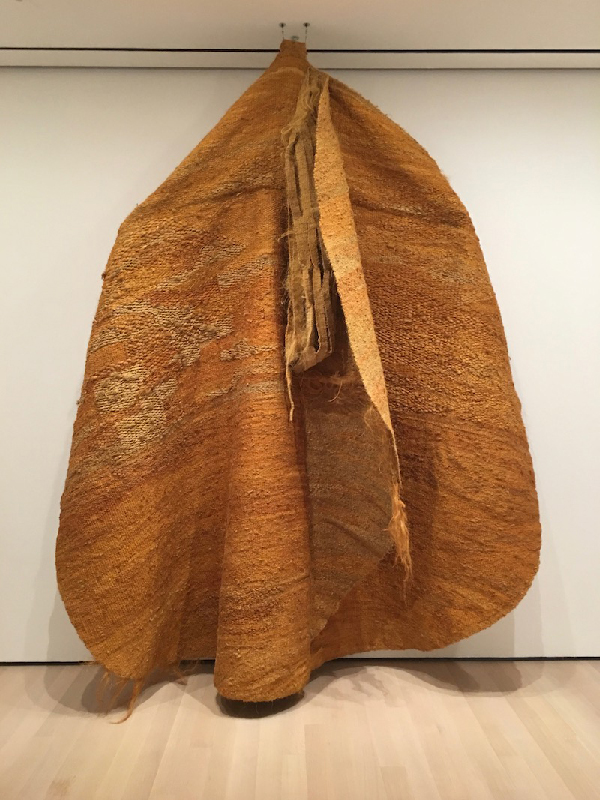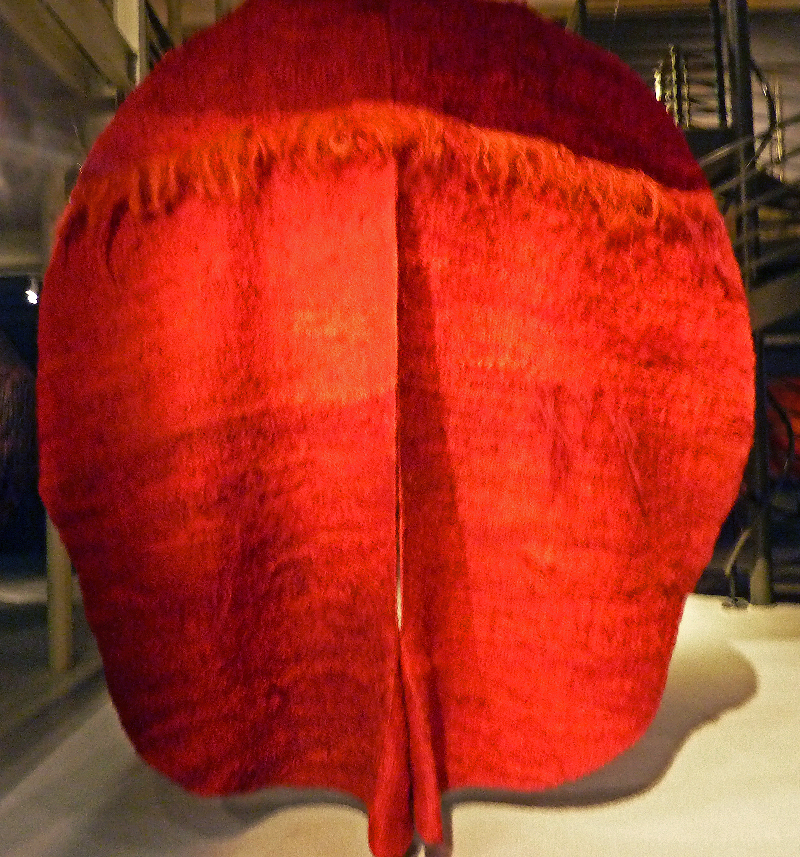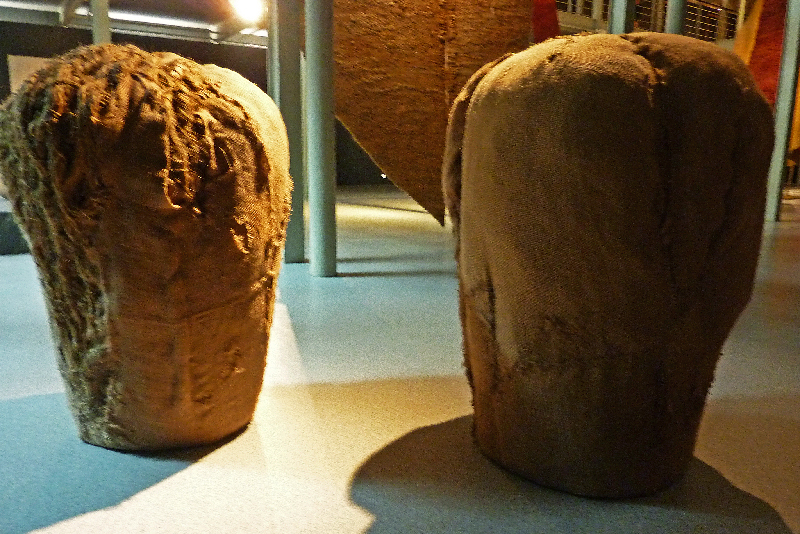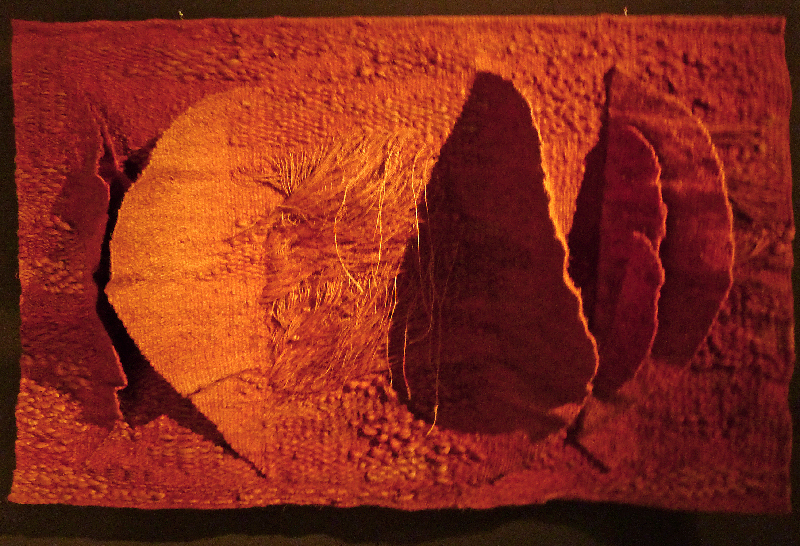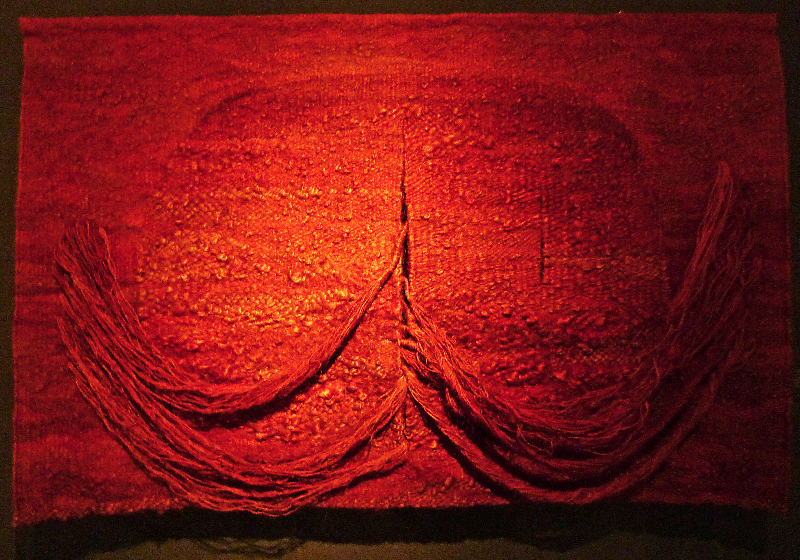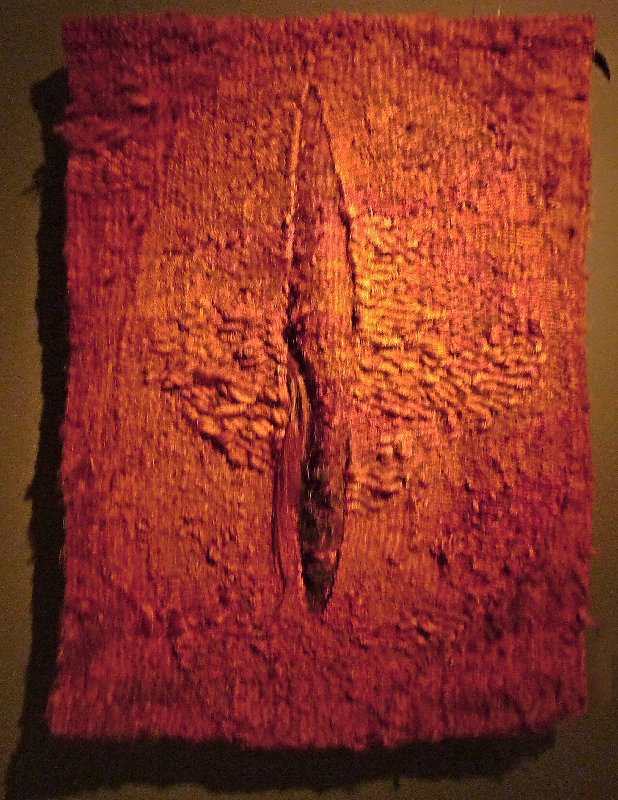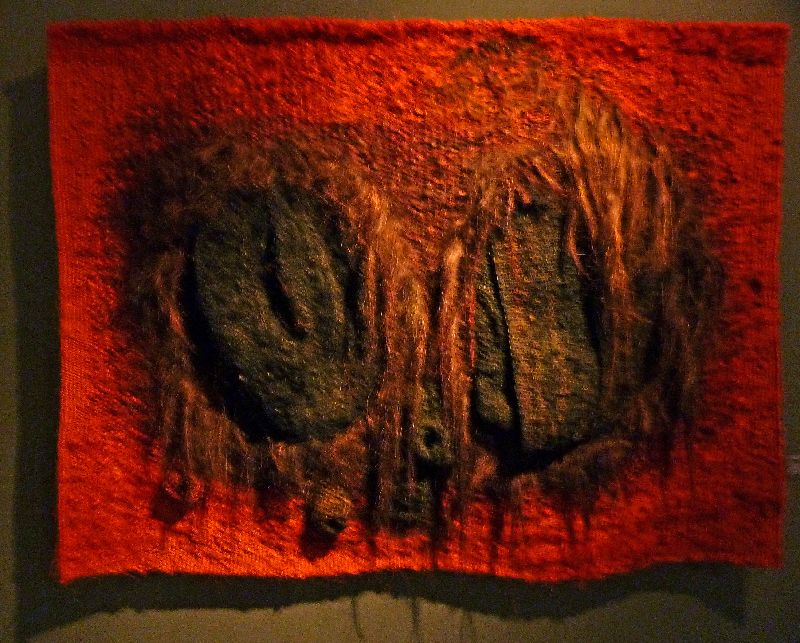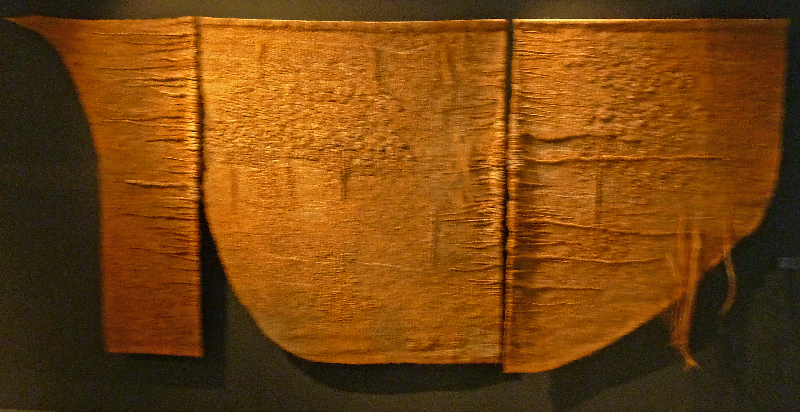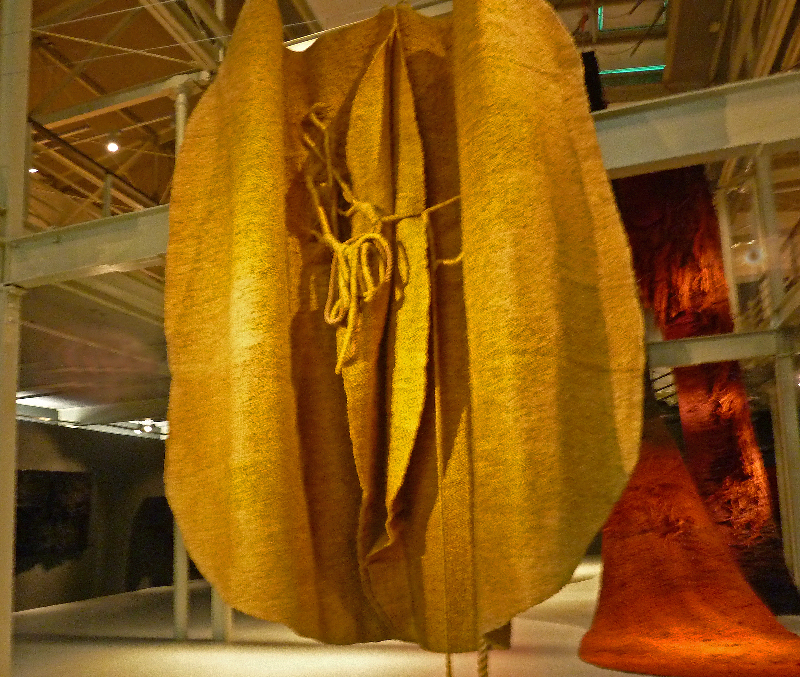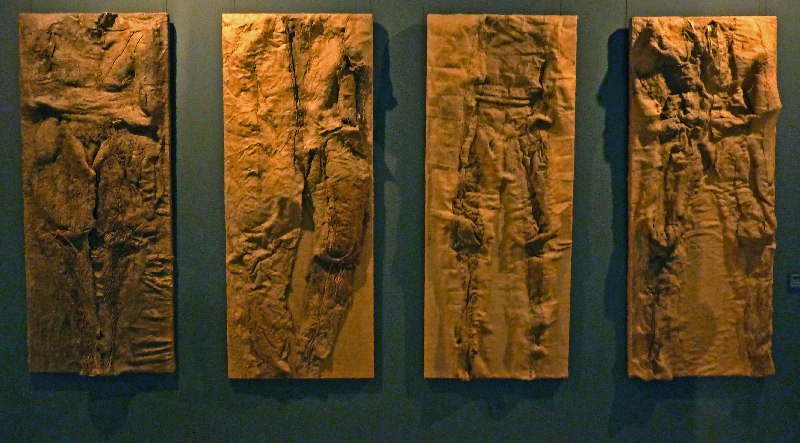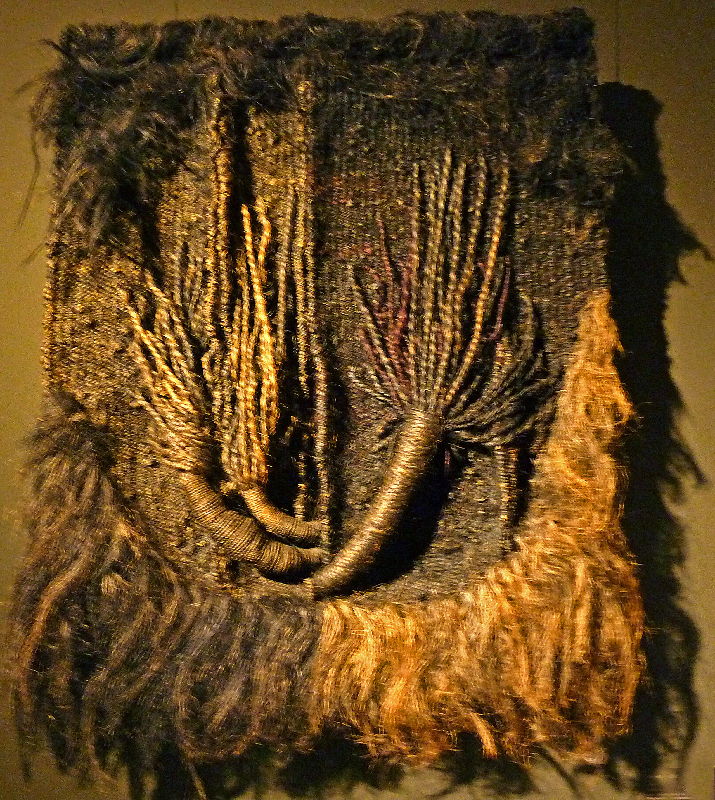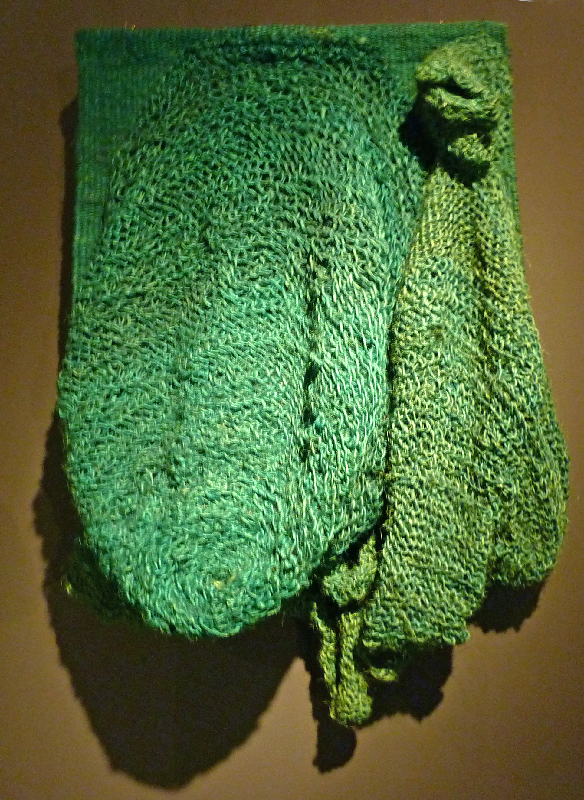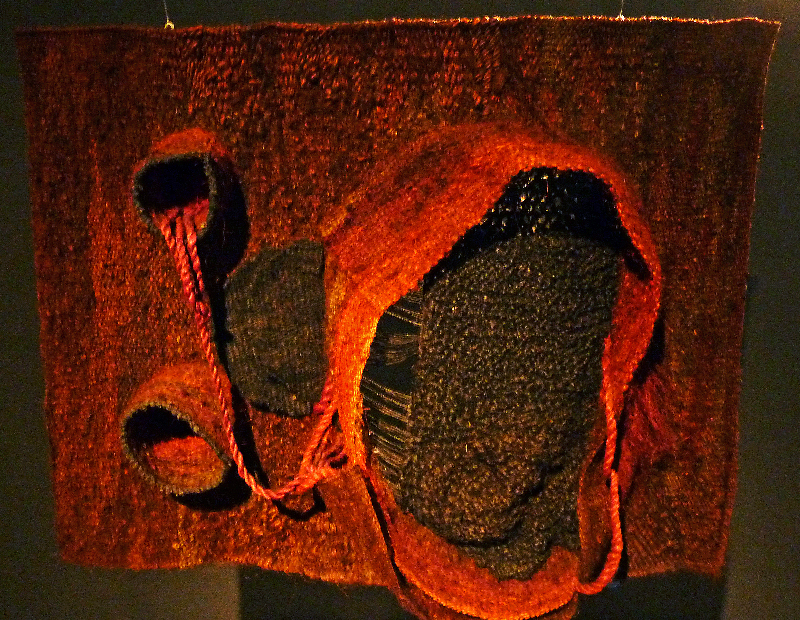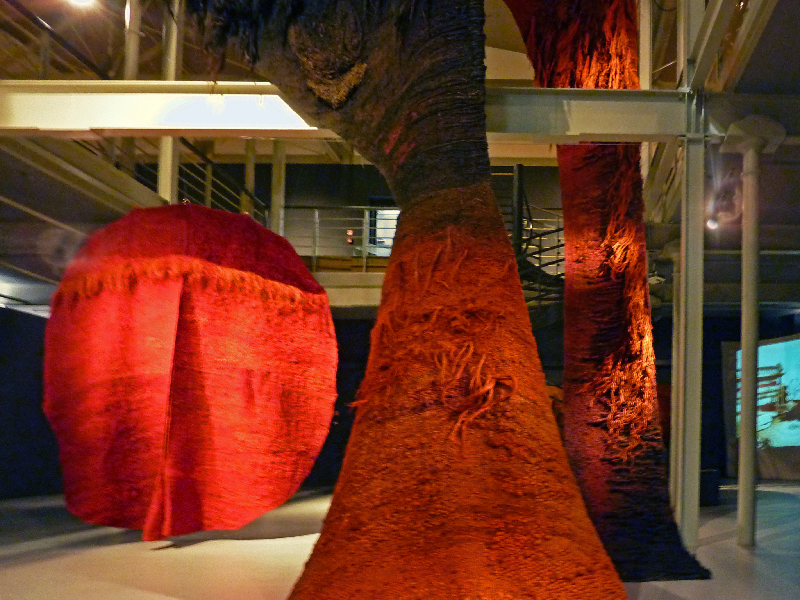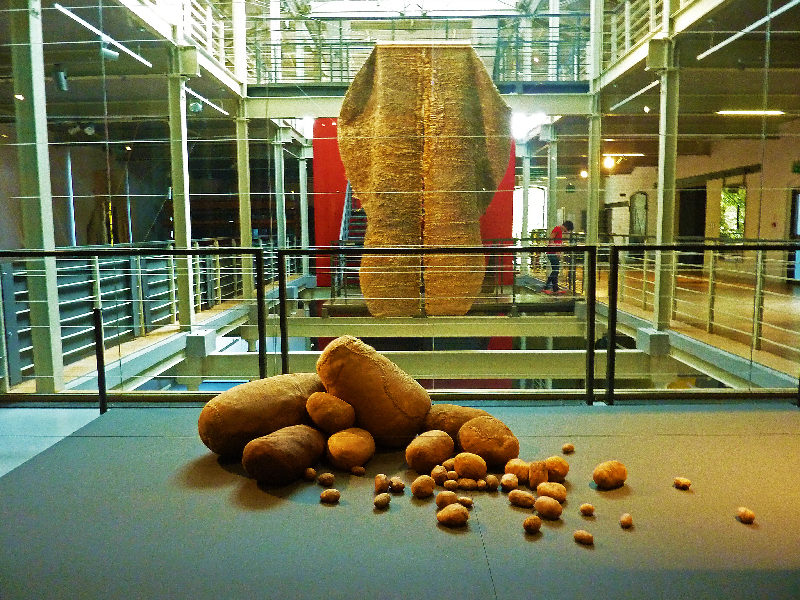
Grande Fleur (Grand Flower), 1981 (Fondation Toms Pauli, Lausanne) [in the background]; photo Elisabeth Brenner Remberg
Metamorfizm – Metamorphism
Magdalena Abakanowicz
May 17th 2017 – September 9th 2018
Magdalena Abakanowicz left a clear mark on the textile art worldwide thanks to the presentation of her considerations, ideas and achievements during several editions of the legendary Biennial of Tapestry in Lausanne. The relations were bilateral and took place on different planes. They allowed to draw the whole world’s attention to the artist and, at the same time, caused her influence on global art, especially the art of textiles, to take on such a broad and colossal meaning. Abakanowicz’s contacts from Lausanne, her friendship with Alice and Pierre Pauli as well as with Marguerite and Pierre Magnenat, after so many years allow us to discover magnificent works with which the artist presented her Swiss friends. They currently constitute a part of the collection of Toms Pauli Foundation, which preserves and researches the rich heritage of the Lausanne Biennial. Moreover, they have not yet been presented to the public in Poland. This is what makes this exhibition so special.
The present exhibition focuses on the mature period in Magdalena Abakanowicz’s creative activity in the field of artistic textiles, when her striving for autonomy of this medium gained worldwide recognition. Thanks to her efforts, works that broke free from the two-dimensionality of the weaving form or even created a new kind of fully three-dimensional soft sculptures were exhibited in the interiors of acclaimed galleries and museums all over the world. Abakanowicz was the forerunner of those activities and they are what she is primarily associated with. In this context, it is the return to the traditional methods of work, such as designing on paperboard and commissioning its making to qualified craftsmen, that has to be treated as an experiment. Such a stance was foreign to the Polish school of textiles. However, it was well-tried by Abakanowicz. Two exceptional works are the effect of this: a paperboard authored by the artist and a tapestry made on its basis in the legendary Aubusson.
Abakanowicz is well-known for her large-format works and that is why the exhibition could not lack them. So there are the Abakans from Lausanne but also “Monumental Composition,” a work lent by the Museum of the Beginnings of Poland in Gniezno, which shows the perfection with which the artist could dominate space with her art. This installation from the years 1973–75 has the panache and strength of organic forms, and constitutes a commentary to the creations destined for private interiors and galleries.
Works from the “Landscape” and “Embryology” cycles prefigure changes in the formal language. They complement the portrait of Magdalena Abakanowicz as a versatile and open artist that never ceased to search for new forms of expression. However, they close the stage of gaining new territories for the art of textiles. It was in the period that sets the time frame for both editions of the “Metamorphism” exhibition (1960s and 1970s) when Magdalena Abakanowicz had such a significant impact on the change of the very foundations of how the medium of textiles functioned.
Curator: Marta Kowalewska
Producer: Beata Bocian
Arrangement of space: Maja Pawlikowska
Graphic design: Full Metal Jacket / Jerzy Gruchot
Works come from: Toms Pauli Foundation, Jan Kosmowskis collection, Le Musée de la Tapisserie d’Aubusson, Museum of the Origins of the Polish State in Gniezno, The National Museum in Poznan.
All photos Elisabeth Brenner Remberg
